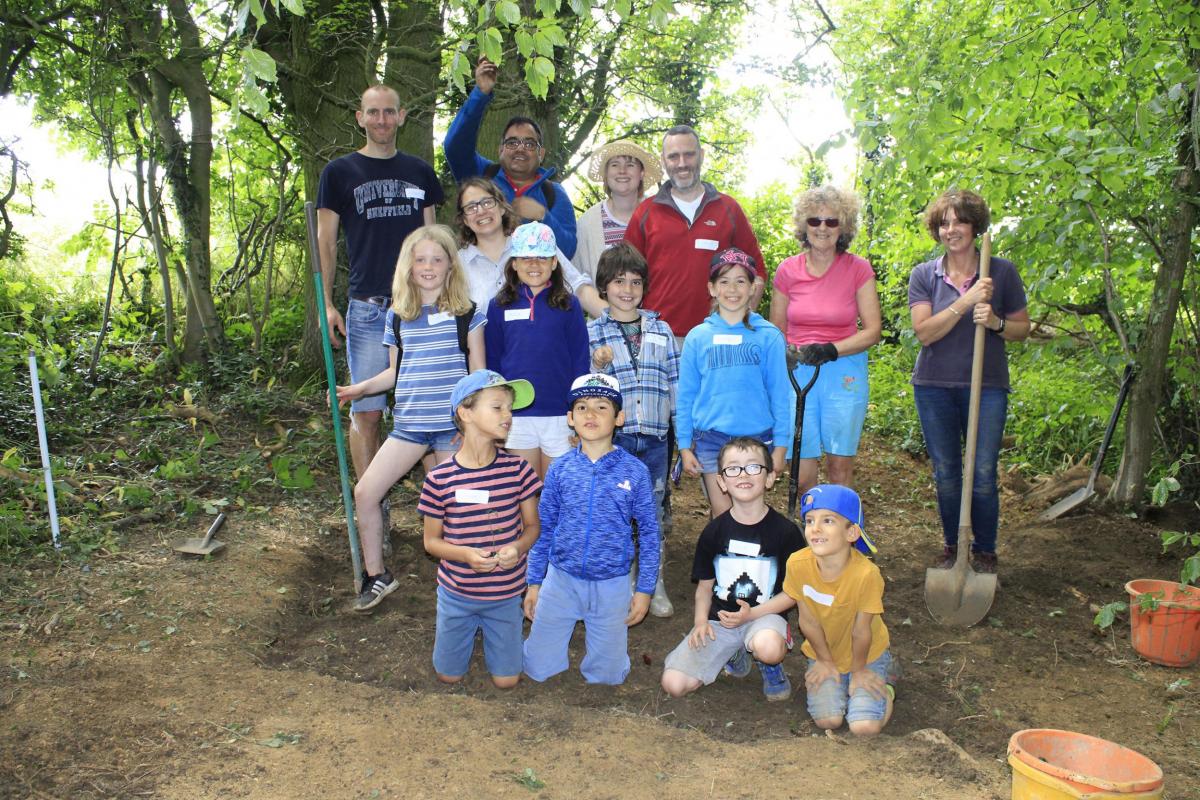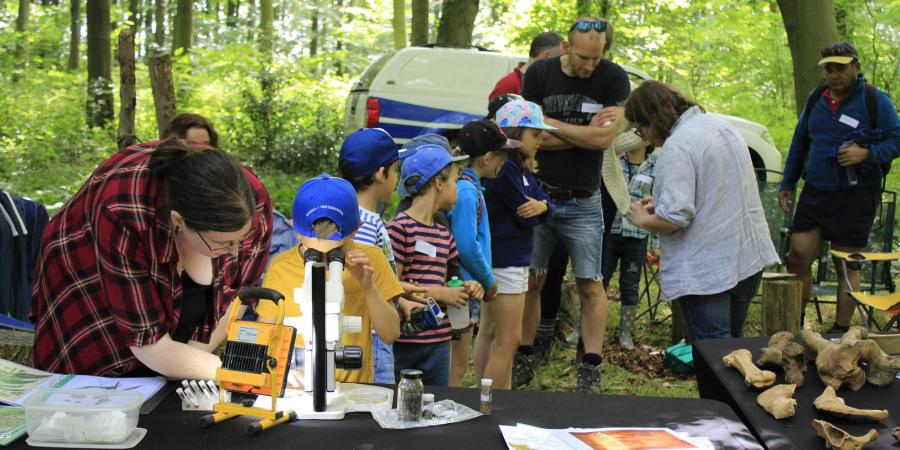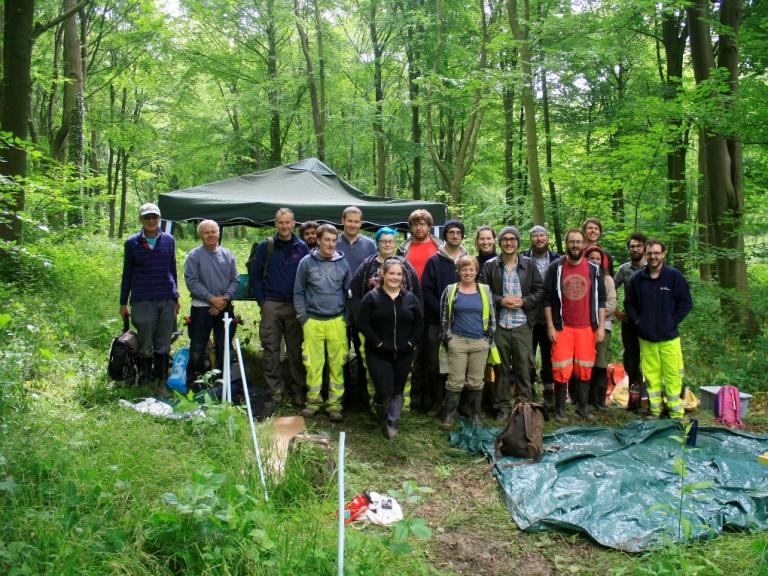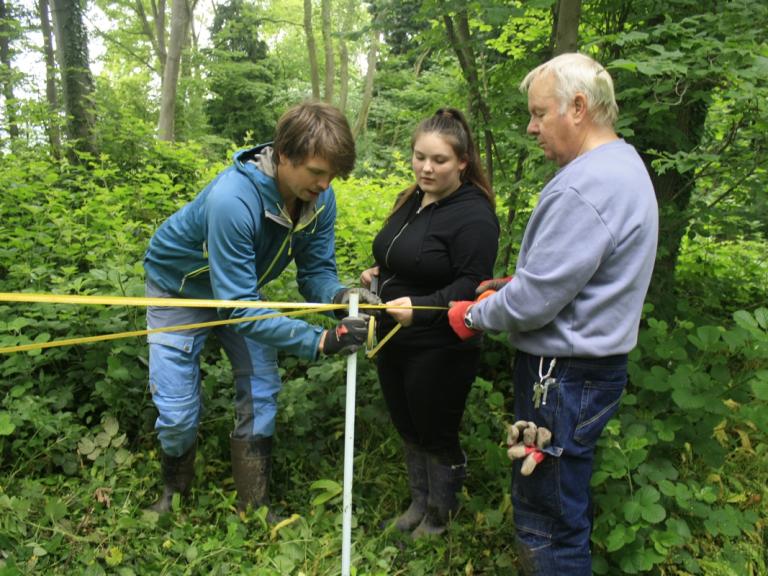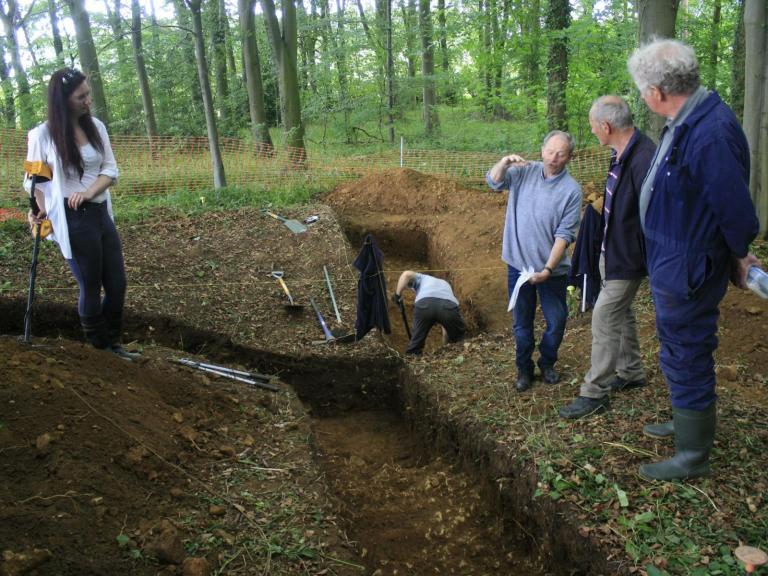Last month, I was able to visit the wonderful Harthill with Woodall Archaeology Group's dig at Cuthbright Wood. Members of the team from Wessex Archaeology North spent three weeks last year and a week in June this year supporting the local community group. Project Manager Mili Rajic works closely with Harthill resident Paul Rowland to plan and promote the excavation.
Arriving at the wood this year was like stepping back in time to the summer days of last year; the birdsong all around, the overwhelming smell of wild garlic and the colours of the leaves shining brightly from the canopy.
Last year, 10 trenches were opened targeting various features: several linear features seen coming into the wood from the west, an earthwork which was a Home Guard training position, a lynchet and a very large pit (see more about last year’s dig below). A year later, it was obvious nature had reclaimed the backfilled trenches, with wild garlic covering the reinstated Home Guard position.
This year the dig has had real success in locating and tentatively dating a linear feature coming in from the west. Two fragments of Roman pottery were found over a surface of stones, which may be a trackway.
Unfortunately, our other three trenches were largely ‘blank’ which was a bit of a problem with a group of eight primary school children coming out on the final day to experience an excavation! In order to provide them with features to identify and dig, we selected a trench to dig some holes in and brought a bucket of the finds from our Community & Education team’s collection (modern pottery, fragments of clay pipe stems and a variety of animal bone including a canine jaw).
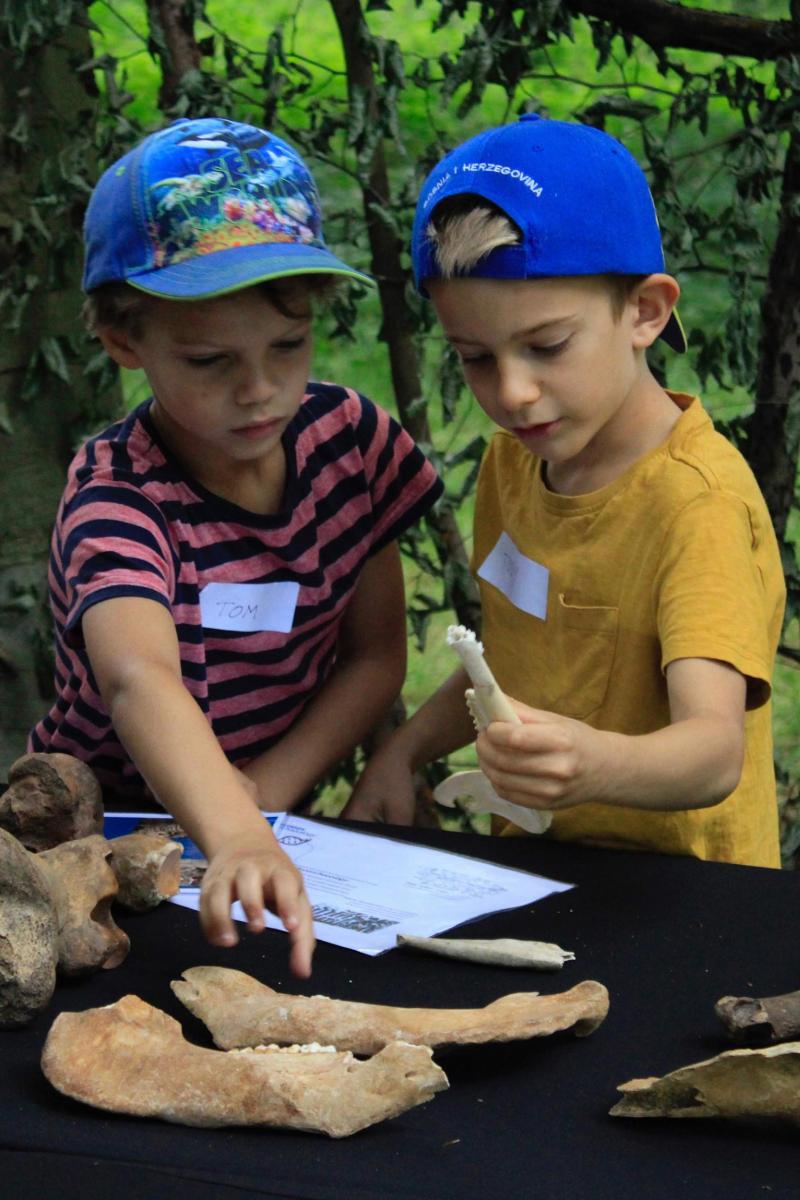
As I enjoy a challenge, I worked to make pretty accurate facsimiles of features I have excavated on other sites, three post-holes of varying shape and a pit. Once dug, I placed a few finds in each and partially backfilled with topsoil, placing more finds and then completing the backfill. Compaction came in the form of shovel and mattock.
The experience of digging these features showed me the difference in the time and energy expended in their digging. Post-holes took a matter of minutes with a trowel, whereas the pit took over half an hour and a huge amount of effort with shovel and mattock. Through the process I also found primary fills (sediment produced during the cutting of features) were inevitably formed on the base of each feature quite quickly due to the nature of the geological, ‘natural’ layer.
When the children arrived on site they were taken to our ‘prehistoric’ camp in the woods and given a short introduction to archaeology. This was followed by the chance to handle some finds and to get up close to a squished beetle and some seeds thanks to Fiona Eaglesham from our Environmental team who came along with her microscope.
Trowels and kneeling pads were distributed and we then all headed out to the excavation site and had a look at the trackway, which our volunteer Ted was very happy to show off!
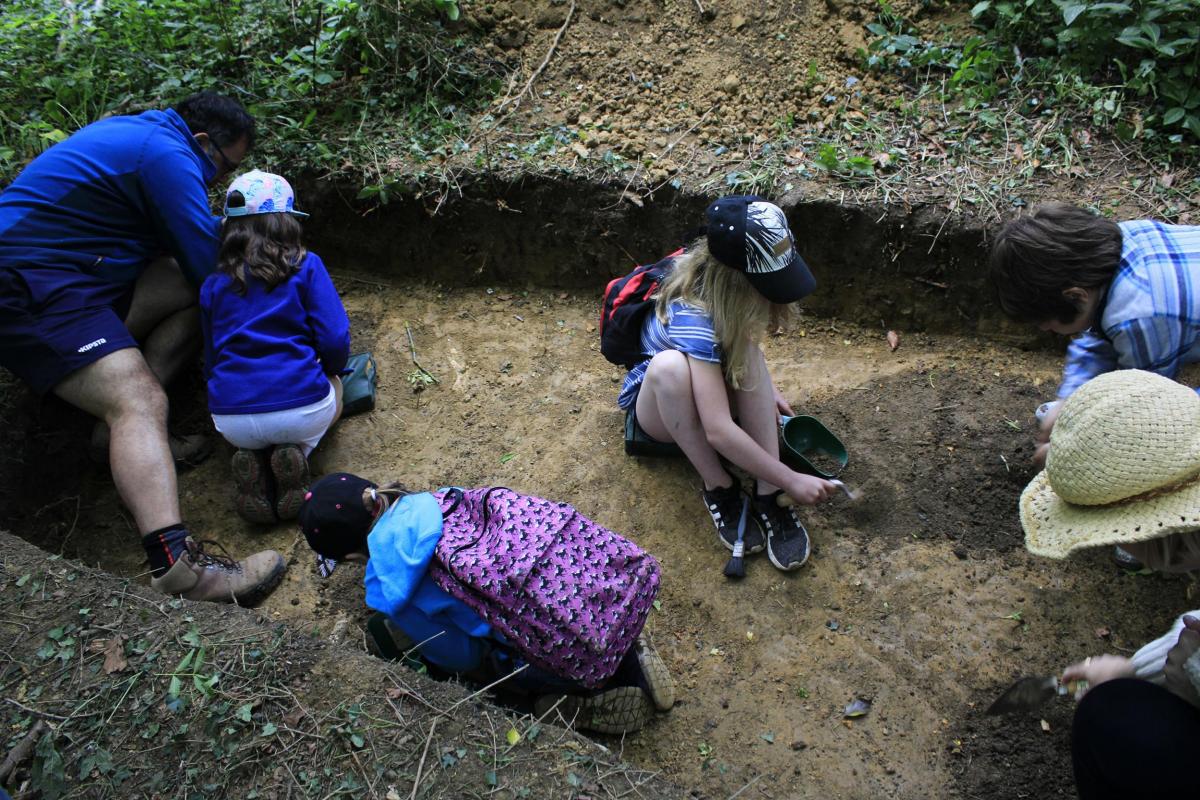
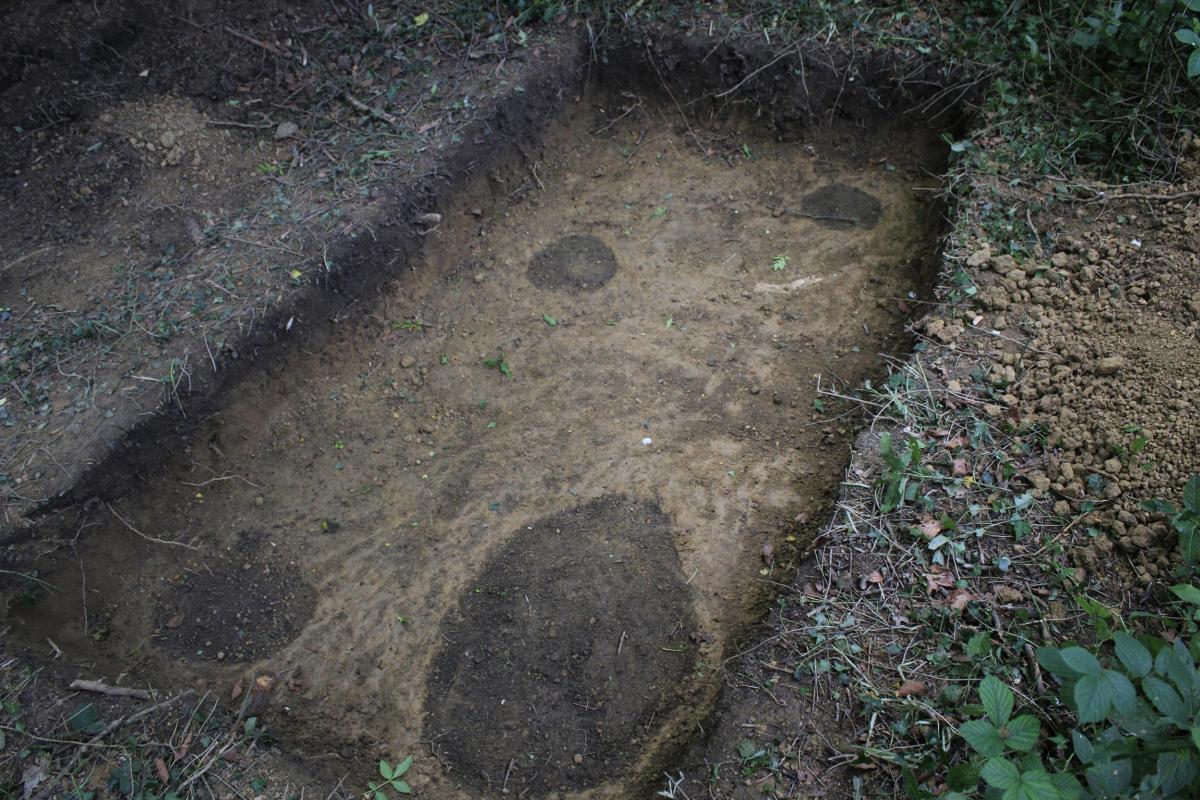
Following a quick demonstration on excavation techniques from Emily and Mili, the children were keen to get started on their own features (with a little help from some parents). The post-holes and pit were half sectioned and gently excavated with trowels and pretty soon the air was ringing with excited shouts as sherds of pottery, clay pipes and a particularly exciting animal jaw were found.
The experiment was a success, the modern post-holes and pits were beautifully excavated by the children who took the opportunity to ask plenty of questions about the finds within them. They also proved an interesting opportunity for the archaeologists involved to see a little of the formation processes of the features we are used to digging.
Otis Gilbert and Emily Eastwood
Photos by Paul Rowland
